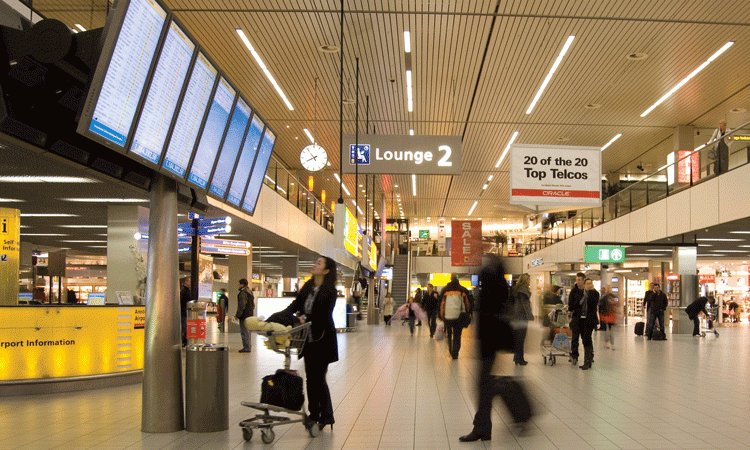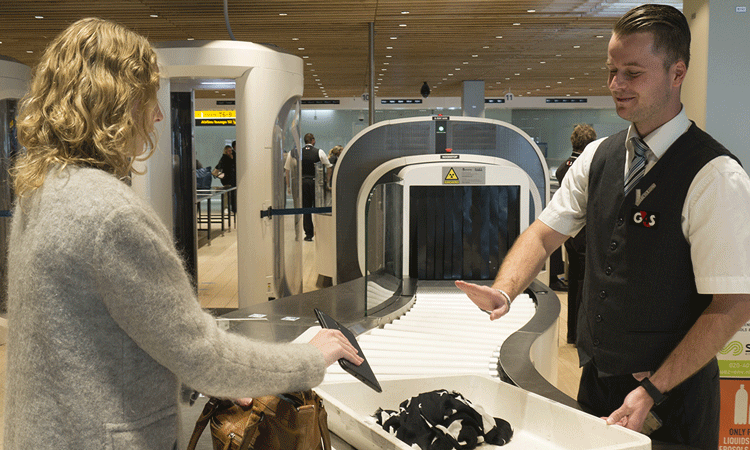Passenger experience: Enabling a seamless flow
- Like
- Digg
- Del
- Tumblr
- VKontakte
- Buffer
- Love This
- Odnoklassniki
- Meneame
- Blogger
- Amazon
- Yahoo Mail
- Gmail
- AOL
- Newsvine
- HackerNews
- Evernote
- MySpace
- Mail.ru
- Viadeo
- Line
- Comments
- Yummly
- SMS
- Viber
- Telegram
- Subscribe
- Skype
- Facebook Messenger
- Kakao
- LiveJournal
- Yammer
- Edgar
- Fintel
- Mix
- Instapaper
- Copy Link
Posted: 6 April 2017 | Wilma van Dijk (Schiphol Amsterdam Airport) | No comments yet
Schiphol Amsterdam Airport and its partners are continually implementing innovations and smart ways to improve travel convenience. To enable a smooth passenger process whereby the required checkpoints can be passed easily, quickly and document-free, Amsterdam Schiphol Airport has embarked on an innovative Digital Airport Programme, which includes changes to the security process and a biometric boarding trial. Head of Safety, Security and Environment, Wilma van Dijk, reveals more.


The airport’s ambition is to become ‘Leading Digital Airport’ in 2018 and the biometric boarding trial is part of this. The introduction of the very first security scan for passengers, crew and staff and the new security lane deployed in 2015 are some of the results from the airport’s collaboration with Dutch airline, KLM, and the Dutch government over the past few years. A trial is also currently taking place with a hand baggage scanner that allows passengers to leave laptops, liquids and gels in their bags during the screening process. Innovative technologies will be tested regularly in the coming period and subsequently rolled out if trails prove successful.
Biometric boarding
By registering their own biometric markers before a trip, travellers will be able to go through each checkpoint smoothly and automatically, in a ‘seamless flow’. Seamless flow will offer travellers a convenient and comfortable travel process while at the same time boosting process speed and efficiency for Schiphol’s operational partners.
From the moment they arrive at the airport until they board their flight, travellers have to go through various checkpoints at Schiphol, handing over their passports and boarding passes each time. Whether checking in, dropping off bags, passing through Security Control, crossing the border or boarding the plane, passengers have to present their ID at every turn. Checkpoints are essential and in some cases required by law. They ensure that a passenger’s suitcases are loaded onto the right plane, provide access and enable them to cross the border, and also safeguard security. But checkpoints can also be a source of queues and stress.
Advances in technology and IT are paving the way for us to one day innovate this process into a seamless flow. Specifically, Schiphol wants to implement biometrics to achieve a smooth process in which travellers can easily ‘flow’ from one checkpoint to the next. To use biometrics, travellers first have to register their biometric marker – such as their fingerprint or a facial scan – with their boarding pass and passport upon arrival at the airport. After this single scan they can complete all the requisite steps at the airport quickly and effortlessly using the same biometric marker. This means they spend less time queuing and have more time for leisure.


Credit Schiphol Group
In seamless flow, the traveller is in control every step of the way. Participation is voluntary therefore the traveller can decide which information he or she wishes to share with Schiphol. Travellers may choose to store their data in a virtual ‘biometric safe’ that they can ‘unlock’ by using their biometric marker whenever travelling via Schiphol. Naturally, because privacy always comes first, Schiphol handles information shared by passengers with all due caution.
Vital partners in creating seamless flow are the airlines (concerning the boarding pass) and the national authorities (concerning the passenger’s passport). This innovation yields advantages for them, too. By automating process steps we will be better able to cope with growing passenger volumes and staff will be able to focus more on personalised service. Data from the checkpoints will supply more precise and real-time information, pinpointing where travellers are in the travel process. Airlines can then fast-track late passengers to ensure they catch their flight. And with data available earlier in the process, the Royal Netherlands Marechaussee will have more time to conduct extra checks where needed, for example.
Schiphol, for its part, will be better able to supply its partners with more adequate information, maximise the limited amount of space available and manage passenger flows more efficiently. By working together to realise seamless flow, we will be able to simultaneously improve the passenger experience, make our processes more efficient and safeguard security.
Hand baggage screening
Together with the National Coordinator for Security and Counterterrorism and KLM, Schiphol is testing two new scanning devices for hand baggage. Again this trial is another way Schiphol is attempting to harness innovative digital developments to make ongoing improvements to the traveller experience.
For the trial, passengers can leave their liquids and gels (LAGs) and laptop in their bags. The software in the scanning devices makes it possible for the security staff to turn the contents of the hand baggage 360 degrees on all axes on a screen; enabling them to view it from all angles and closely inspect it for prohibited items.
The pilot project will take place in two security lanes: one in Departure Hall 3 and one in Transfer Filter E/F, where transfer passengers are checked. The passengers will receive an explanation and instructions on the spot.
Passengers will still have to put their LAGs in a resealable, plastic bag with a volume of not more than 1-litre, with none of the containers in the bag holding more than 100ml. In the specific lane where the pilot project is being carried out, passengers will then receive a separate instruction – that the 1-litre bag containing LAGs may remain in their bag.
Another purpose of the pilot project is to find out whether the screening process can be made simpler and faster for passengers. If everything goes according to plan and the pilot project is completed successfully, Schiphol will gradually introduce these new and innovative hand baggage scanning devices in all 67 security lanes through 2017 / 2018.
Schiphol is working continuously to improve the security process, with the aim of making the security check more pleasant and more comfortable for passengers and ensuring a safe and efficient security process at the airport. The collaboration with the National Coordinator for Security and Counterterrorism and KLM over the past few years has, among other things, resulted in the introduction of the very first security scan for passengers, crew and staff and the new security lane in 2015.
The benefits of centralising security
Back in 2015 Schiphol Amsterdam Airport switched over to central security and now uses five large central checkpoints rather than the original 130 security lanes located at the gates. As a result of this overhaul Schiphol now offers a more efficient and service-orientated security process and increased pier space.
In order to enable this transition, the terminal underwent a major overhaul which included an extra floor being constructed in Departure Halls 2 and 3 to accommodate the new checkpoints. On piers E, F and G an additional level was built in order to separate various passenger flows. In total Schiphol now has three security checkpoints for departing passengers and two for transfer passengers. As well as enhanced comfort and efficiency, the new security concept also anticipates the airport’s future growth changes with regards to new regulations and new technological developments.
Commenting on the transformation Jos Nijhuis, Chief Executive of the Schiphol Group, said: “This is a milestone in the renovation of the terminal. It means greater comfort for passengers and a more efficient process for the airlines.”
Biography


Wilma van Dijk has been Head of Safety, Security and Environment at Schiphol Amsterdam Airport since October 2015. She began her career at the Dutch Ministry of Justice where she held various positions. In 2009 She was appointed as Director Civil Aviation Security at the National Coordinator for Counterterrorism (current NCTV). In 2011/2012, Van Dijk was one of the quartermasters in the development of the current NCTV, where she held the position of Director of Monitoring, Securing and Civil Aviation from 2012 to 2014. During this period she was also Project Director Safety Throne Change and Project Director of International Conferences such as the Nuclear Security Summit and the Global Conference on Cyber Space. Since 2014 Van Dijk was Deputy National Coordinator for Counterterrorism and Security and Director of Cyber Security at the NCTV.
Issue
Related topics
Baggage handling, Border control, Passenger experience and seamless travel


















